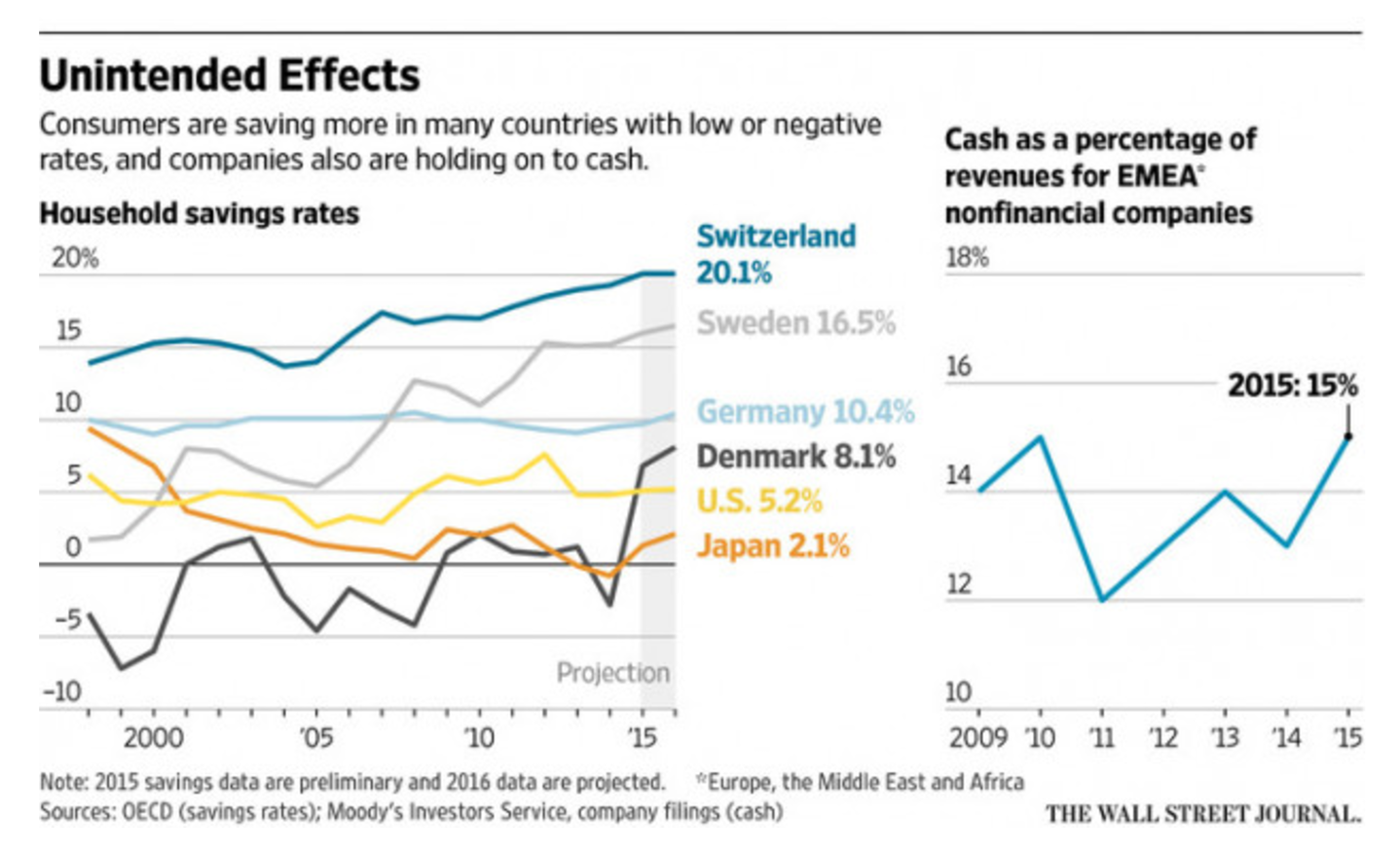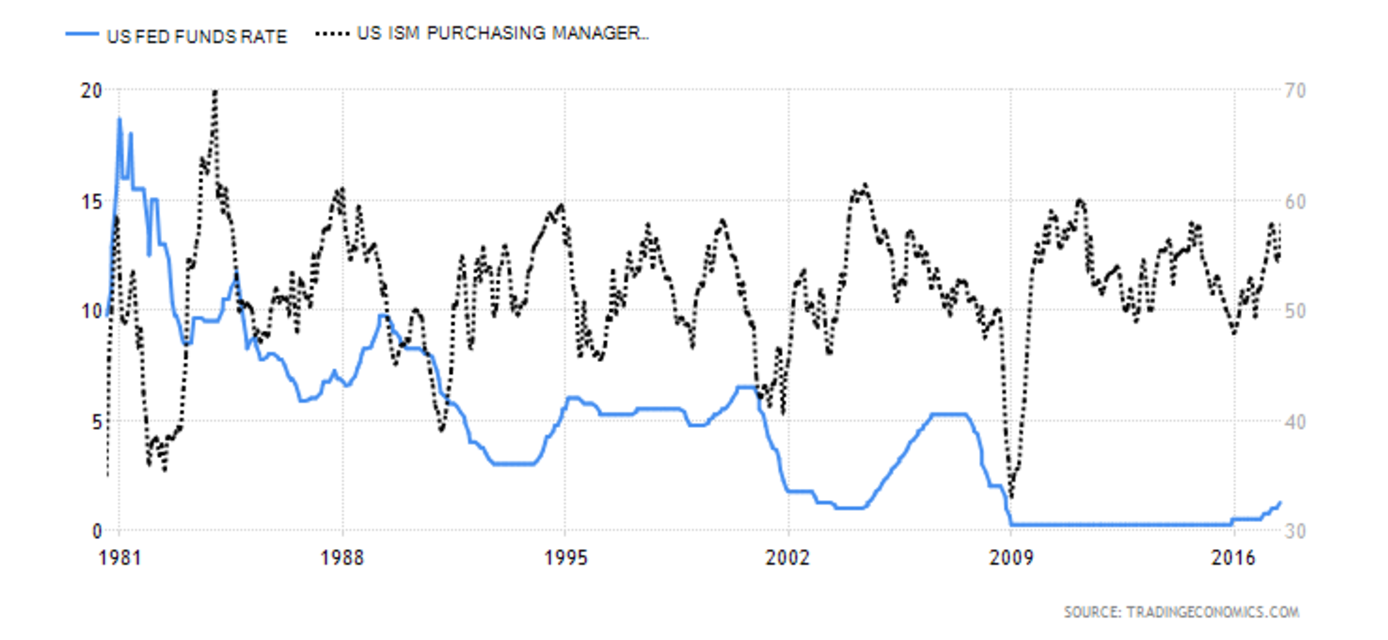By Nikolaos Bourtzis.
Monetary policy has become the first line of defense against economic slowdowns — it’s especially taken the driver’s seat in combating the crisis that began in 2007. Headlines everywhere comment on central bank’s (CB) decision-making processes and reinforce the idea that central bankers are non-political economic experts that we can rely on during downturns. They rarely address, however, that central banks’ monetary policies have failed repeatedly and continue to operate on flawed logic. This piece reviews recent monetary policy efforts and explains why central bank operations deserve our skepticism–not our blind faith.
What central banks try to do
To set monetary policy central banks usually target the interbank rate, the interest rate at which commercial banks borrow (or lend) reserves from one another. They do this by managing the level of reserves in the banking system to keep the interbank rate close to the target. By targeting how cheaply banks can borrow reserves, the central bank tries to persuade lending institutions to follow and adjust their interest rates, too. In times of economic struggle, the central bank attempts to push rates down, such that lending (and investing) becomes cheaper to do.
This operation is based on the theory that lower interest rates discourage savings and promote investment, even during a downturn. That’s the old “loanable funds” story. According to the neoclassical economists in charge at most central banks, due to rigidities in the short run, interest rates sometimes fail to respond to exogenous shocks. For example, if the private sector suddenly decides to save more, interest rates might not fall in response. This produces mismatches between savings and investment; too much saving and too little investment. As a result, unemployment arises since aggregate demand is lower than aggregate supply. In the long run, though, these mismatches will disappear and the loanable funds market will clear at the “natural” interest rate which guarantees full employment and a stable price level. But to speed things up, the CB tries to bring the market rate of interest towards that “natural” rate through its interventions.
Recent Attempts in Monetary Policy
However, interest rate cuts miserably failed to kick-start the recovery during the Great Recession. That prompted the use of unconventional tools. First came Quantitative Easing (QE). Under this policy, central banks buy long-term government bonds and/or other financial instruments (such as corporate bonds) from banks, financial institutions, and investors, which floods banks with reserves to lend out and financial markets with cash. The cash is then expected to eventually filter down to the real economy. But this did not work either. The US (the first country to implement QE in response to the Crash) is experiencing its longest and weakest recovery in years. And Japan has been stagnating for almost two decades, even though it started QE in the early 2000s.
Second came “the ‘natural rate’ is in negative territory” argument; Larry Summers’ secular stagnation hypothesis. The logic is that if QE is unable to increase inflation enough, negative nominal rates have to be imposed so real rates can drop to negative territory. Since markets cannot do that on their own, central banks will have to do the job. First came Sweden and Denmark, then Switzerland and the Eurozone, and last but not least, Japan.
Not surprisingly, the policy had the opposite effect of what was intended. Savings rates went up, instead of down, and businesses did not start borrowing more; they actually hoarded more cash. Some savers are taking their money out of bank accounts to put them in safe deposits or under their mattresses! The graph below shows how savings rate went up in countries that implemented negative rates, with companies also following suit by holding more cash.

Central bankers seem to be doing the same thing over and over again, while expecting a different outcome. That’s the definition of insanity! Of course, they cannot admit they failed. That would most definitely bring chaos to financial markets, which are addicted to monetary easing. Almost every time central bankers providea weaker response than expected, the stock market falls.
There is too much private debt.
So how did we get here? To understand why monetary policy has failed to lift economies out of crises, we have to talk about private debt.
Private debt levels are sky high in almost every developed country. As more and more debt is piled up, it becomes more costly to service it. Interest payments start taking up more and more out of disposable income, hurting consumption. Moreover, you cannot convince consumers and businesses to borrow money if they are up to their eyeballs in debt, even if rates are essentially zero. What’s more, some banks are drowning in non-performing loans so why would they lend out more money, if there is no one creditworthy enough to borrow? Even if private debt levels were not sky high, firms only borrow if capacity needs to expand. During recessions, low consumer spending means low capacity utilization, so investing in more capacity does not make sense for firms.
How to move forward
So, now what? Should we abolish central banks? God no! Central banks do play an important role. They are needed as a lender of last resort for banks and the government. But they should not try to fight the business cycle. Tinkering with interest rates and buying up financial instruments encourages speculation and accumulation of debt, which further increases the likelihood of financial crises. The recent pick-up in economic activity is again driven by private debt and even the Bank of England is worried that this is unsustainable and might be the trigger of the next financial crisis.
The success of monetary policy depends on market mechanisms. Since this is an unreliable channel that promotes economic activity through excessive private debt growth, governments should be in charge of dealing with the business cycle. The government is the only institution that can pump money into the economy effectively to boost demand when it is needed. But due to the current misguided fears of large deficits, governments have not provided the necessary fiscal response. Investment requires as little uncertainty as possible to take place and only fiscal policy can reduce uncertainty. Admittedly in previous decades, monetary responses might have been responsible for restoring some business confidence as shown in the figure below.

This effect, though, cannot always be relied upon during severe slumps. And no doubt, more attention needs to be given to private debt, which has reached unprecedented levels.
Monetary policy has obviously failed to produce a robust recovery in most countries. It might have even contributed in bringing about the financial crisis of 2008. But central bankers refuse to learn their lesson and keep doing the same thing again and again. They don’t understand that their policies have failed to kick-start our economies because the private sector is drowning in debt. It’s time to put governments back in charge of economic stabilization and let them open their spending spigots. A large fiscal stimulus is needed if our economies are to recover. Even a Debt Jubilee should not be ruled out!
About the Author
Nikos Bourtzis is from Greece, and recently graduated with a Bachelor in Economics from Tilburg University in the Netherlands. He will be pursuing a Master in Economics and Economic analysis at Groningen University. Research interests are heterodox macroeconomics, anti-cyclical policies, income inequality, and financial instability.
